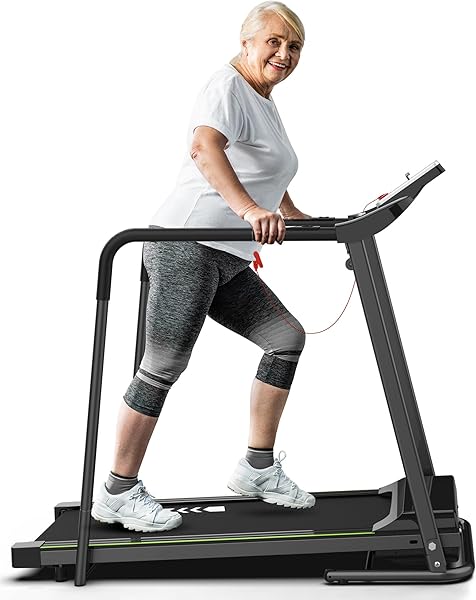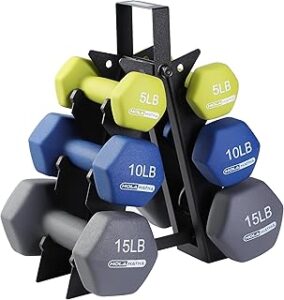Treadmills are one of the most popular fitness equipment pieces used by individuals of all fitness levels. Whether you want to lose weight, improve cardiovascular health, or train for a marathon, a treadmill provides a convenient and effective workout option. With various models available in the market, it can be overwhelming to select the right one. This comprehensive guide will help you understand different types of treadmills, their benefits, features to consider, and maintenance tips.

BUY NOW
Benefits of Using a Treadmill
Treadmills offer numerous benefits, making them a great addition to any home gym or fitness routine.
1. Convenience and Accessibility
One of the biggest advantages of using a treadmill is that it allows you to exercise regardless of the weather or time of day. You can walk, jog, or run in the comfort of your home.
2. Effective Cardio Workout
Treadmills provide an excellent cardiovascular workout, improving heart health, lung capacity, and overall endurance. Regular use can help lower blood pressure and reduce the risk of heart disease.
3. Weight Loss and Fat Burning
Running or walking on a treadmill burns calories efficiently, making it a great tool for weight loss and fat burning. You can adjust the intensity by changing the speed or incline.
4. Joint-Friendly Exercise
Compared to running on hard outdoor surfaces, treadmill belts provide cushioning that reduces the impact on joints. This is especially beneficial for individuals with knee or joint issues.
5. Customizable Workouts
Most modern treadmills come with various speed settings, incline options, and pre-programmed workouts to help you achieve specific fitness goals.
Types of Treadmills
Treadmills come in different types, each catering to specific needs. Understanding these types will help you choose the right one.
1. Manual Treadmills
Manual treadmills require the user to power the belt by walking or running. They are typically more affordable and don’t require electricity but may lack advanced features.
2. Motorized Treadmills
These treadmills come with an electric motor that powers the belt. They offer adjustable speed and incline settings, making them ideal for various workout intensities.
3. Folding Treadmills
Folding treadmills are designed for small spaces and can be folded when not in use. They are perfect for home users with limited space.
4. Commercial Treadmills
Commercial-grade treadmills are built for durability and high performance. They are commonly found in gyms and fitness centers and can handle extensive usage.
5. Curved Treadmills
Curved treadmills are non-motorized and designed for natural movement. They are commonly used by athletes and fitness enthusiasts who prefer a more intense workout.
Features to Consider When Buying a Treadmill
When selecting a treadmill, consider the following features to ensure you get the best one for your needs.
1. Motor Power
The motor power, measured in horsepower (HP), determines the treadmill’s performance. For walking, a 1.5 to 2.0 HP motor is sufficient, while running requires at least a 2.5 HP motor.
2. Running Surface
The size of the running deck should be suitable for your stride. A deck length of at least 50 inches is recommended for walking, while running requires a length of 55-60 inches.
3. Incline and Speed Settings
Treadmills with adjustable incline and speed settings allow you to modify workout intensity. Look for models with at least a 10% incline and speeds up to 10-12 mph.
4. Cushioning System
A treadmill with a good cushioning system reduces the impact on your joints and provides a comfortable running experience.
5. Built-in Programs and Connectivity
Modern treadmills come with built-in workout programs, heart rate monitors, and connectivity options such as Bluetooth, Wi-Fi, and app compatibility for a more interactive experience.
6. Weight Capacity
Check the treadmill’s weight capacity to ensure it can support your body weight safely. Most home treadmills support up to 300 lbs, while commercial models can accommodate more.
7. Foldability and Portability
If space is a concern, opt for a foldable treadmill with wheels for easy storage and movement.
8. Price and Warranty
Consider your budget and choose a treadmill that offers the best value. Also, check for warranties on the motor, frame, and parts to ensure durability.
Treadmill Maintenance Tips
Proper maintenance can extend the lifespan of your treadmill and keep it running smoothly.
1. Keep It Clean
Dust and debris can affect performance. Regularly wipe down the belt, deck, and console.
2. Lubricate the Belt
Lubricating the treadmill belt reduces friction and extends its lifespan. Check the manufacturer’s recommendations for the right type of lubricant.
3. Check Belt Alignment
Ensure the belt is properly aligned and centered to avoid uneven wear and tear.
4. Inspect for Loose Parts
Regularly check for loose screws, bolts, or worn-out parts and tighten or replace them as needed.
5. Monitor Motor and Electronics
Keep the motor area clean and check for any electrical issues to prevent malfunction.
Conclusion
A treadmill is an excellent investment for anyone looking to improve their fitness and overall health. Whether you’re a beginner or an experienced runner, selecting the right treadmill based on your needs and budget can enhance your workout experience. By considering important features and following proper maintenance practices, you can enjoy a safe and effective workout for years to come. If you’re ready to take your fitness journey to the next level, explore various treadmill options and find the perfect one for your goals!


